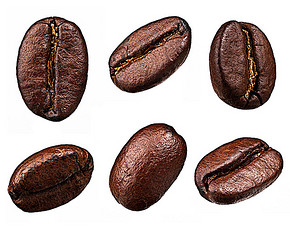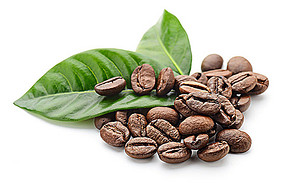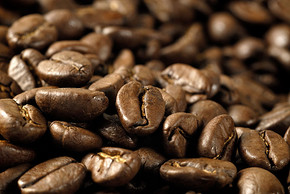Guatemala coffee growing area cultivation grade flavor introduction
Follow the caf é (Wechat official account vdailycom) and found that Beautiful Cafe opened a small shop of its own.
Coffee history
In the 1850s, coffee was brought to Guatemala by missionaries. In the 19th century, with the invention of European synthetic dyes, Guatemala's original important export product, indigo (indigo, a plant dye) industry was hit, coffee gradually became an important export, coffee cultivation gradually expanded. By the end of the 19th century, coffee had played an important role in Guatemalan politics and economy. Large coffee farmers had great influence on the political situation. Under the leadership of a president born as a coffee farmer, the government promoted coffee cultivation through free coffee seedlings and tax policies.

In 1944, after the democratically elected president came to power, the reform policy was implemented and the cheese of the vested interests was overthrown under the planning of the US intelligence service. Guatemala was plunged into a half-century-long civil war until 1996.
The civil war damaged the original coffee industry, but ironically, the original species of coffee in Guatemala, mainly bourbon, was preserved.
Guatemala's coffee industry plays an important role in the domestic economy, with coffee exports accounting for 1/3 of total foreign exchange revenues. Guatemala was once the largest coffee producer in China and the United States until it was overtaken by Honduras in 2011.
Coffee positioning
After the end of the civil war in 1996, the coffee industry in Guatemala began to revive, when the national coffee market was flooded by Robota beans in Vietnam.
In the 1990s, the World Development Bank promoted coffee cultivation in Asia and provided financial support for coffee production in relevant countries. a few years later, Vietnam became a big coffee producer and the international coffee market became the vast ocean of robusta beans in the country. the price of raw coffee beans has fallen.
In this context, Guatemala chose to focus on the production of high-grade coffee, with the advantage of bourbon native species retained as a result of the civil war, to meet the needs of the international high-end coffee market, focusing on high-altitude high-quality Arabica beans and boutique coffee market. And began to hold COE events in 2001.
Coffee producing area
20 of Guatemala's 22 provinces grow coffee. In line with the preference of the international coffee market for origin certification, Guatemala divides the country into eight coffee producing areas on the basis of geography, climate, coffee characteristics and cup test performance, namely: Antigua Coffee (Antigua Coffee), Freganes Plateau (Fraijanes Plateau), Vivian Heights (Highland Huehue), San Marcos Volcano (Volconic San Marcos). New Orient (New Oriente), traditional Attland (Traditional Atitlan), Rainforest Koban (Rainforest Coban), Arcatel Nango Valley (Acatenango Valley). Each production area has its own representative color (it feels like the color aid of star fans * ^ ◎ ^ *), and designed the slogan-"Rainbow Choice", A Rainbow of Choices.
Coffee planting
98% of coffee in Guatemala is grown in shade. Official sources say shading is a tradition in Guatemala, and people have learned to grow shade since coffee first spread to Guatemala.
At the national level Guatemala promotes the coffee forest system and details its agro-forest system in the form of public information documents.
Shading planting has many benefits to coffee, such as providing shelter for coffee, adjusting the intensity and quantity of sunlight to protect coffee from exposure, protecting coffee from wind and rain, slowing down the impact of Rain Water erosion on coffee trees and their roots when heavy rain comes, the accumulation of fallen leaves of shade trees to provide nourishment for coffee trees, reducing the growth of weeds, helping to store water and improve soil moisture. Slow down the ripening rate of coffee fruit, improve the performance in the cup, and make the acidity and mellow performance better.
The coffee harvest season is about January to March, and the difference in harvest time is mainly related to altitude. Pick by hand.
Coffee treatment
Traditionally, it is washed and dried in the sun. Although many producing areas are remote and have a large number of small-scale farmers, Guatemala's rich natural water resources facilitate wet treatment, with 35 major rivers and more than 1000 lakes and lagoons making it possible for most producers to wash.
Coffee grade
Traditional Guatemalan coffee is graded according to the altitude at which it grows:
SHB,strictly hard bean, extremely hard beans, ≥ 1370m
HB,hard bean, hard beans, 1370-1066m
Prime-Extra Prime, selected, 762m-1066m
Under the background of boutique coffee, on the basis of the original grade, the coffee from 8 boutique producing areas can be marked with their respective producing area names, representing different flavors, but if the cup test results of some coffees in the producing areas are not consistent with the flavor of the producing areas, they can only be exported with the regular grade of SHB.
Coffee flavor
The eight boutique coffee producing areas have their own characteristics. on the whole, Guatemalan coffee brings a clear cup experience with elegant acidity, full and round, with a floral aroma and a clean, long finish. In addition, coffee from some producing areas also brings a wonderful smoky flavor.
Coffee organization
Anacafe, which represents Guatemalan coffee producers, was founded in 1960 and is a national coffee organization in Guatemala. It represents Guatemalan coffee in international coffee affairs and is responsible for the marketing of Guatemalan coffee. Its income comes from service fees for coffee exports. The systematic division of the eight major producing areas is the work of the organization.
Important Notice :
前街咖啡 FrontStreet Coffee has moved to new addredd:
FrontStreet Coffee Address: 315,Donghua East Road,GuangZhou
Tel:020 38364473
- Prev

Introduction to Costa Rican Coffee Coral Mountain Coral Mountain Manor
Following Cafe (official Wechat account vdailycom) found that Costa Rican Coffee is famous for its exquisite taste and strict quality control. In the private room coffee has been introduced to Costa Rica's Fica (Wolf Manor), which is a 50% honey-treated bean with a rich sweet taste and even a milky aroma when roasted in medium and deep depth. This time I bring it to you.
- Next

Introduction to the Historical taste and Flavor of Guatemalan Coffee Bean varieties
Following caf é (Wechat official account vdailycom) found that the beautiful coffee shop opened a small shop for Guatemalan coffee varieties. Guatemalan coffee beans are mostly cultivated in high-altitude volcanic soils belonging to the most advanced Arabica (Arabica) varieties. Due to the long ripening period, the beans are medium and dense (Guatemalan coffee beans are rated not by particle size).
Related
- Detailed explanation of Jadeite planting Land in Panamanian Jadeite Manor introduction to the grading system of Jadeite competitive bidding, Red bid, Green bid and Rose Summer
- Story of Coffee planting in Brenka region of Costa Rica Stonehenge Manor anaerobic heavy honey treatment of flavor mouth
- What's on the barrel of Blue Mountain Coffee beans?
- Can American coffee also pull flowers? How to use hot American style to pull out a good-looking pattern?
- Can you make a cold extract with coffee beans? What is the right proportion for cold-extracted coffee formula?
- Indonesian PWN Gold Mandrine Coffee Origin Features Flavor How to Chong? Mandolin coffee is American.
- A brief introduction to the flavor characteristics of Brazilian yellow bourbon coffee beans
- What is the effect of different water quality on the flavor of cold-extracted coffee? What kind of water is best for brewing coffee?
- Why do you think of Rose Summer whenever you mention Panamanian coffee?
- Introduction to the characteristics of authentic blue mountain coffee bean producing areas? What is the CIB Coffee Authority in Jamaica?

